- NPK and Essential Elements: Understanding Plant Deficiency Signs
- 1. Nitrogen (N) Deficiency:
- 2. Phosphorus (P) Deficiency:
- 3. Potassium (K) Deficiency:
- Importance of NPK and Essential Elements for Plants
- The Role of NPK
- Other Essential Elements for Plants
- The Consequences of Deficiency
- Nitrogen Deficiency: Identifying Signs in Plants
- 1. Stunted Growth
- 2. Yellowing of Leaves
- 3. Pale or Smaller Leaves
- 4. Delayed Flowering and Fruit Development
- 5. Weak Stems
- 6. Reduced Root Growth
- 7. Low Overall Plant Vigor
- Phosphorus Deficiency: Recognizing Symptoms in Plants
- Signs of Phosphorus Deficiency
- Causes of Phosphorus Deficiency
- Treating Phosphorus Deficiency
- Potassium Deficiency: Key Indicators in Plant Health
- Symptoms of Potassium Deficiency
- Causes of Potassium Deficiency
- Prevention and Treatment
- Conclusion
- Micronutrient Deficiency: Essential Elements for Optimal Growth
- The Importance of Micronutrients
- Signs of Micronutrient Deficiency
- Preventing and Correcting Micronutrient Deficiency
- Recognizing Signs of Calcium Deficiency in Plants
- 1. Stunted Growth
- 2. Leaf Deformation
- 3. Blossom End Rot
- 4. Yellowing Leaves
- 5. Weak Stems
- 6. Reduced Fruit Quality
- Iron Deficiency: Detecting Symptoms and Solutions
- 1. Interveinal Chlorosis
- 2. Stunted Growth
- 3. Leaf Drop
- 4. Solutions for Iron Deficiency
- Zinc Deficiency: Identifying Issues and Remedies for Plant Health
- What is Zinc Deficiency?
- Identifying Zinc Deficiency
- Causes of Zinc Deficiency
- Remedies for Zinc Deficiency
- Conclusion
- “Question-Answer”
- How can I determine if my plants are deficient in essential elements?
- What are the essential elements for plant growth?
- How do I know if my plants need more nitrogen?
- What are the signs of phosphorus deficiency in plants?
- Are there any visible signs of potassium deficiency in plants?
- Can a deficiency in one essential element affect the availability of others?
- How can I correct nutrient deficiencies in my plants?
- “Video” Plant Disease and Nutrient Deficiency Identification
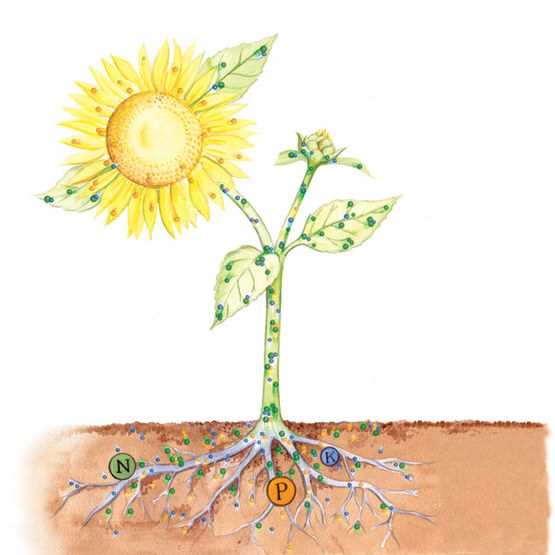
Proper nutrition is vital for the health and growth of plants. Just like humans, plants require essential elements in order to thrive. Three of the most important elements for plant nutrition are nitrogen (N), phosphorus (P), and potassium (K), also known as NPK.
Nitrogen is responsible for the green color in plants and is crucial for the production of proteins, enzymes, and chlorophyll. Without enough nitrogen, plants may exhibit yellowing of leaves and stunted growth.
Phosphorus is involved in energy transfer and is essential for proper root development, flowering, and fruiting. Plants lacking phosphorus may show signs of a purple hue on leaves, poor root growth, and delayed flowering.
Potassium, also known as potash, plays a vital role in overall plant health and disease resistance. It helps in the activation of enzymes, photosynthesis, and water regulation. Deficiency of potassium can lead to weak stems, discolored leaves, and poor fruit quality.
Recognizing the signs of deficiency in these essential elements is crucial for maintaining healthy plants. By understanding the symptoms associated with NPK deficiency, gardeners and farmers can take appropriate measures to provide the necessary nutrients and ensure optimal plant growth.
Disclaimer: This article is meant for informational purposes only and should not be considered as professional advice. If you have specific concerns about plant nutrition or deficiencies, consult with a qualified horticulturist or agricultural specialist.
NPK and Essential Elements: Understanding Plant Deficiency Signs
When it comes to understanding the health of plants, it is important to recognize the signs of nutrient deficiencies. Essential elements, such as nitrogen (N), phosphorus (P), and potassium (K), play a crucial role in plant growth and development. A deficiency in any of these elements can lead to stunted growth, poor yield, and overall plant distress.
1. Nitrogen (N) Deficiency:
- Yellowing of leaves, starting from the bottom
- Stunted growth and small leaves
- Delayed flowering and fruiting
2. Phosphorus (P) Deficiency:
- Purplish discoloration of leaves
- Poor root development
- Delayed maturity
3. Potassium (K) Deficiency:
- Yellowing or browning of leaf margins
- Weak stems and poor structural integrity
- Poor fruit quality
It is worth noting that plants require other essential elements as well, including calcium, magnesium, sulfur, iron, and others. Deficiencies in these elements can also result in visible signs of plant distress, such as leaf discoloration, wilting, and leaf deformities.
Regular soil testing and analysis can help identify nutrient deficiencies in plants and guide the application of fertilizer or soil amendments. Additionally, maintaining a well-balanced and diverse garden or crop rotation can help prevent nutrient deficiencies and promote overall plant health.
| Element | Signs of Deficiency |
|---|---|
| Nitrogen (N) | Yellowing of leaves, stunted growth, delayed flowering |
| Phosphorus (P) | Purplish discoloration of leaves, poor root development |
| Potassium (K) | Yellowing or browning of leaf margins, weak stems |
Importance of NPK and Essential Elements for Plants
Plants require a variety of essential elements to grow and thrive. These elements, which include nitrogen (N), phosphorus (P), and potassium (K), are often referred to as NPK. While NPK are the most important nutrients for plants, they are not the only ones that plants need.
The Role of NPK
- Nitrogen (N): Nitrogen is essential for plant growth as it is a major component of proteins, enzymes, and chlorophyll. It plays a vital role in promoting healthy leaf and stem development.
- Phosphorus (P): Phosphorus is involved in various processes such as energy transfer, photosynthesis, and cell division. It is necessary for root development, flowering, and fruiting.
- Potassium (K): Potassium helps plants regulate water uptake and retain water. It assists in enzyme activation, protein synthesis, and carbohydrate metabolism. Potassium also enhances disease resistance and overall plant vigor.
Other Essential Elements for Plants
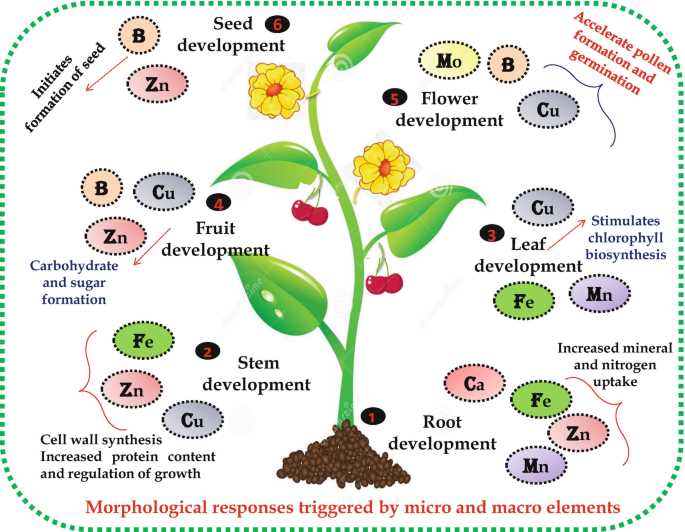

In addition to NPK, plants require other essential elements in smaller quantities to support their growth and development. These elements include:
- Calcium (Ca): Calcium is vital for strong cell walls and proper cell division. It also helps with nutrient uptake and transport within the plant.
- Magnesium (Mg): Magnesium is a central component of chlorophyll, which is essential for photosynthesis. It also plays a role in enzyme activation and nutrient absorption.
- Sulfur (S): Sulfur is necessary for the formation of amino acids, proteins, and vitamins. It also aids in root development and nitrogen utilization.
- Iron (Fe): Iron is crucial for the production of chlorophyll and the transfer of energy within the plant. It is involved in enzyme reactions and helps with nitrogen fixation.
- Boron (B): Boron is required for proper cell division, carbohydrate metabolism, and the movement of sugars within the plant. It also supports pollination and fruit development.
- Zinc (Zn): Zinc plays a role in the synthesis of growth hormones and protein, as well as seed production and root development.
- Copper (Cu): Copper is involved in photosynthesis and the production of chlorophyll. It also aids in the formation of lignin, which supports plant structure.
- Manganese (Mn): Manganese is essential for oxygen evolution during photosynthesis and enzyme activation. It also helps with nitrogen metabolism and the formation of chloroplasts.
- Molybdenum (Mo): Molybdenum is necessary for nitrogen fixation and the conversion of nitrate to ammonia in plants.
The Consequences of Deficiency
If plants lack any of these essential elements, they may exhibit signs of deficiency, such as stunted growth, yellowing of leaves, poor flowering or fruiting, and increased susceptibility to diseases and pests. Therefore, it is crucial for gardeners and farmers to provide plants with a balanced supply of NPK and other essential elements to ensure their optimal growth and productivity.
Note: This is a basic overview of the importance of NPK and essential elements for plants. The specific nutrient requirements may vary depending on the plant species and growing conditions.
Nitrogen Deficiency: Identifying Signs in Plants
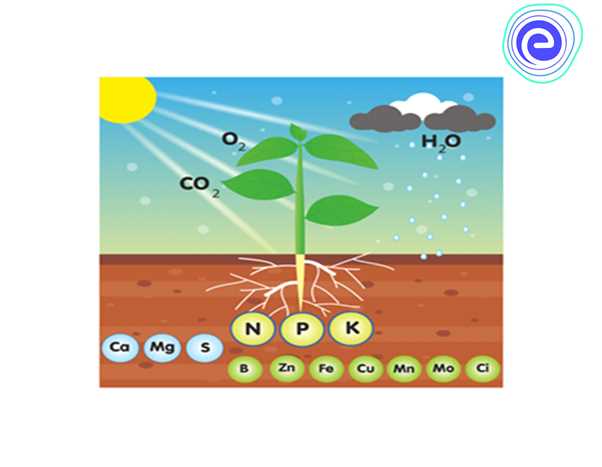

Nitrogen (N) is one of the essential elements required for healthy plant growth and development. It plays a crucial role in various physiological processes, including photosynthesis, protein synthesis, and enzyme activity. When plants are deficient in nitrogen, they exhibit specific signs that can help gardeners and farmers identify the problem.
1. Stunted Growth
One of the earliest signs of nitrogen deficiency in plants is stunted growth. Nitrogen is essential for cell division and growth, and a lack of it can result in poor plant development. Plants may appear smaller than usual and fail to reach their expected size.
2. Yellowing of Leaves
Nitrogen is a key component of chlorophyll, the pigment responsible for the green color of leaves. When plants lack nitrogen, the chlorophyll content decreases, resulting in yellowing of the leaves. These yellow leaves tend to start from the older leaves at the bottom of the plant and gradually progress upward.
3. Pale or Smaller Leaves
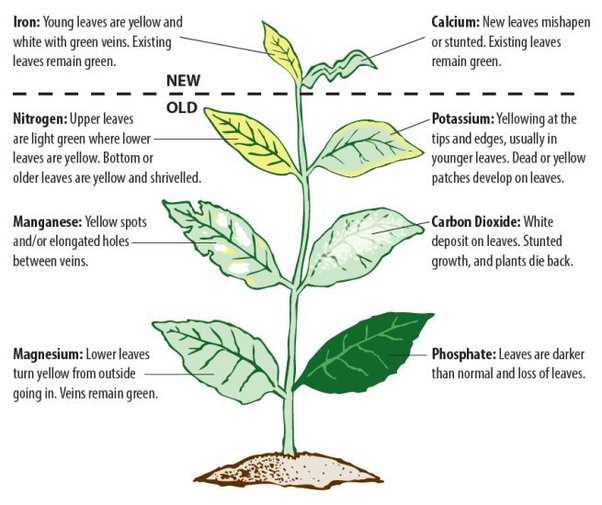

In addition to yellowing, nitrogen-deficient plants may have pale or smaller leaves. This is because nitrogen is required for the production of amino acids and proteins, which are essential for leaf development. Without enough nitrogen, leaves may be smaller than usual and have a pale, washed-out appearance.
4. Delayed Flowering and Fruit Development
Nitrogen deficiency can also delay flowering and fruit development in plants. Nitrogen is involved in the production of hormones that regulate flowering and fruiting processes. When plants lack nitrogen, these processes may be delayed, leading to a reduced yield or poor-quality fruits.
5. Weak Stems
Nitrogen is an essential nutrient for building strong cell walls in plants. When nitrogen is deficient, plants may have weak stems that are prone to breaking or bending. This can make the plants more vulnerable to environmental stressors, such as wind or heavy rain.
6. Reduced Root Growth
Roots require nitrogen for growth and development. In the case of nitrogen deficiency, roots may be underdeveloped and have a reduced capacity to uptake water and nutrients from the soil. This can further exacerbate the plant’s overall nutrient deficiency and lead to ongoing health issues.
7. Low Overall Plant Vigor
Overall, nitrogen-deficient plants may exhibit a general lack of vigor. They may appear weak, unhealthy, and more susceptible to diseases and pests. Without sufficient nitrogen, plants cannot function optimally and may struggle to compete with other plants in their environment.
It’s important for gardeners and farmers to monitor their plants closely for signs of nitrogen deficiency. By recognizing these symptoms early on, appropriate measures can be taken to address the issue and promote healthy growth and development.
Phosphorus Deficiency: Recognizing Symptoms in Plants
A lack of phosphorus in plants can lead to stunted growth and poor development. It is essential for energy transfer, cell division, and nutrient metabolism. Recognizing the symptoms of phosphorus deficiency can help you take necessary steps to correct the problem and ensure healthy plant growth.
Signs of Phosphorus Deficiency
- Stunted Growth: One of the most common symptoms of phosphorus deficiency is stunted growth. Plants lacking phosphorus may appear smaller and weaker compared to healthy plants.
- Purple Leaves: Phosphorus deficiency can cause leaves to turn a dark purple color. This is often most noticeable on the underside of the leaves.
- Poor Flowering: Phosphorus plays a crucial role in flower development. Lack of phosphorus can result in reduced flower production and poor flower quality.
- Delayed Maturity: Plants deficient in phosphorus may take longer to reach maturity and produce fruits or seeds. This can significantly impact crop yield.
- Root Development Issues: Phosphorus deficiency can cause poor root development. This can make plants more susceptible to environmental stress and less able to take up water and nutrients from the soil.
Causes of Phosphorus Deficiency
Several factors can contribute to phosphorus deficiency in plants:
- Low Soil Phosphorus Content: If the soil lacks sufficient phosphorus, plants will struggle to absorb an adequate amount.
- Imbalanced pH Levels: pH levels that are too high or too low can affect phosphorus availability in the soil.
- Excessive Soil Moisture: When soil is overly saturated, it can inhibit phosphorus uptake by plant roots.
- Competition from Other Nutrients: Some nutrients can hinder the absorption of phosphorus by plant roots. This is particularly true for excessive levels of iron, zinc, and aluminum.
Treating Phosphorus Deficiency
To treat phosphorus deficiency in plants, you can take the following steps:
- Soil Testing: Conduct a soil test to determine the phosphorus levels in the soil. This will help you determine if your plants are lacking this essential nutrient.
- Fertilization: If the soil test indicates low levels of phosphorus, apply a phosphorus-rich fertilizer to replenish the nutrient levels.
- Adjusting pH Levels: If the soil pH is imbalanced, take measures to adjust it to an optimal range for phosphorus availability.
- Proper Watering: Ensure that you are watering your plants appropriately, neither overwatering nor underwatering, to promote healthy nutrient uptake.
- Companion Planting: Planting phosphorus-fixing companion plants, such as legumes, can help improve phosphorus availability in the soil.
By recognizing the symptoms of phosphorus deficiency and taking appropriate measures, you can ensure that your plants receive the necessary nutrients for optimal growth and development.
Potassium Deficiency: Key Indicators in Plant Health
Potassium is an essential nutrient for plant growth and plays a vital role in various physiological processes. A lack of potassium can lead to severe deficiencies in plant health and productivity. It is important to identify the key indicators of potassium deficiency in plants to take corrective measures in a timely manner.
Symptoms of Potassium Deficiency
Potassium deficiency often manifests itself through various visual symptoms in plants. Some common indicators include:
- Yellowing and browning of leaf margins and tips
- Leaf curling or cupping
- Stunted growth
- Poor overall plant vigor
- Weak stem structure
- Flower and fruit drop
Causes of Potassium Deficiency
There can be several reasons for potassium deficiency in plants:
- Imbalanced soil pH: High or low pH levels can impede potassium uptake by plants.
- Poor soil fertility: Soil with low organic matter and inadequate potassium content can contribute to deficiencies.
- Overfertilization: Excessive use of certain fertilizers, which are low in potassium, can lead to deficiencies.
- Environmental stress: Drought, extreme temperatures, or excessive rainfall can affect potassium absorption and utilization by plants.
Prevention and Treatment
To prevent or address potassium deficiencies, it is crucial to maintain optimal soil conditions and provide adequate potassium to plants:
- Conduct soil tests to determine the nutrient levels, including potassium, in the soil.
- Choose potassium-rich fertilizers or amendments for soil enrichment.
- Apply fertilizers in the recommended quantities and timings based on the specific crop requirements.
- Ensure proper irrigation practices to maintain soil moisture levels for optimal nutrient uptake.
- Monitor plant health regularly and take corrective actions promptly if potassium deficiency symptoms appear.
Conclusion
Potassium deficiency can have detrimental effects on plant health and overall crop productivity. By understanding the key indicators of potassium deficiency and taking proactive measures to prevent or treat deficiencies, farmers and gardeners can ensure the optimal growth and development of their plants.
Micronutrient Deficiency: Essential Elements for Optimal Growth
While macronutrients like nitrogen, phosphorus, and potassium (NPK) are crucial for plant growth, micronutrients also play a vital role in achieving optimal growth. Micronutrients are essential elements that plants require in smaller quantities compared to macronutrients, but their absence or deficiency can have a significant impact on plant health and development.
The Importance of Micronutrients
Micronutrients, also known as trace elements, include iron, manganese, zinc, copper, boron, molybdenum, and chlorine. These elements are involved in various metabolic processes that influence plant growth and development. For example:
- Iron is essential for chlorophyll synthesis and overall plant energy production.
- Zinc plays a crucial role in enzyme activity and the synthesis of growth hormones.
- Copper is necessary for enzyme function and the production of lignin, a component of plant cell walls.
- Boron is involved in cell wall formation and pollen germination.
- Molybdenum is required for nitrogen fixation and enzyme activity.
Signs of Micronutrient Deficiency
When plants lack essential micronutrients, they exhibit specific symptoms that can help diagnose deficiencies. These symptoms can vary depending on the specific nutrient deficiency. Here are some common signs:
| Micronutrient | Signs of Deficiency |
|---|---|
| Iron | Interveinal chlorosis (yellowing) of young leaves |
| Zinc | Stunted growth, rosette formation, small leaves |
| Copper | Wilting, dieback, necrotic leaves |
| Boron | Brittle, distorted new growth; hollow stems |
| Molybdenum | Yellowing and cupping of leaves; overall stunted growth |
Preventing and Correcting Micronutrient Deficiency
To prevent or correct micronutrient deficiency, it is crucial to maintain a balanced nutrient profile in the soil. This can be achieved through regular soil testing and analysis to determine nutrient levels. Micronutrient deficiencies can be addressed through the following methods:
- Using micronutrient-rich fertilizers or soil amendments
- Foliar application of micronutrient sprays
- Applying compost or organic matter to improve soil fertility
- Adjusting soil pH, as some micronutrients are only available within specific pH ranges
By ensuring an adequate supply of micronutrients, plants can develop properly, grow vigorously, and achieve optimal health and productivity.
Recognizing Signs of Calcium Deficiency in Plants
Calcium is an essential nutrient for plants, playing a crucial role in their development and overall health. Without adequate calcium, plants can suffer from various deficiencies that can hinder growth and lead to long-term damage. To prevent and address calcium deficiency in plants, it’s important to be able to recognize the signs. Here are some common signs of calcium deficiency:
1. Stunted Growth
One of the first signs of calcium deficiency in plants is stunted growth. When plants lack calcium, their cells cannot divide properly, leading to stunted or distorted growth. This can result in reduced overall plant size and slower development.
2. Leaf Deformation
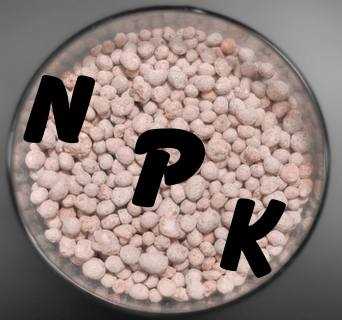

Another sign of calcium deficiency is leaf deformation. Leaves may become distorted, curled, or twisted. In severe cases, the edges of the leaves may become brown and necrotic. This is because calcium is necessary for maintaining the structure and integrity of cell walls.
3. Blossom End Rot
Blossom end rot is a common disorder found in tomatoes, peppers, and other fruiting plants. It appears as a dark, sunken lesion at the blossom end of the fruit. This condition is often caused by calcium deficiency, as calcium is needed for normal cell development and to prevent cell breakdown.
4. Yellowing Leaves
Yellowing or chlorosis of the leaves can also be a sign of calcium deficiency. The lack of calcium inhibits the transport of other essential nutrients within the plant, leading to nutrient imbalances and yellowing of the leaves.
5. Weak Stems
Weak stems that are easily bent or broken can indicate a lack of calcium. Calcium is responsible for strengthening and providing rigidity to plant cell walls. Without sufficient calcium, the stems become weak and unable to support the weight of the plant.
6. Reduced Fruit Quality
Plants deficient in calcium may produce fruits with reduced quality. This can include blemishes, uneven ripening, and increased susceptibility to diseases. Calcium is necessary for proper fruit development and the regulation of cell processes involved in ripening.
If you notice these signs of calcium deficiency in your plants, it’s important to address the issue promptly. Adding calcium-rich fertilizers or soil amendments, such as gypsum or lime, can help alleviate the deficiency and promote healthy growth. Regular soil testing and maintaining proper nutrient balance are key to preventing calcium deficiency and ensuring optimal plant health.
Iron Deficiency: Detecting Symptoms and Solutions
Iron deficiency is a common problem in plants and can cause significant damage if not addressed properly. Detecting the symptoms early on is crucial in preventing long-term damage to your plants. Here are some signs to look out for:
1. Interveinal Chlorosis
One of the most common symptoms of iron deficiency is interveinal chlorosis, which is the yellowing of leaf tissue between the veins while the veins themselves remain green. This happens because iron is essential for the production of chlorophyll, the pigment responsible for the green color of leaves.
2. Stunted Growth
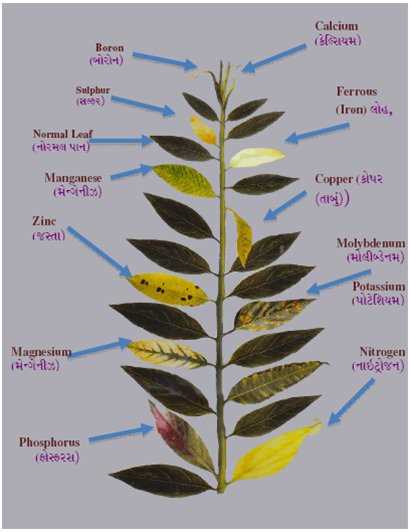

Iron deficiency can also lead to stunted growth in plants. Without enough iron, plants cannot produce the proteins necessary for cell division and elongation. As a result, the overall growth of the plant is hindered, leading to smaller and weaker plants.
3. Leaf Drop
If iron deficiency is severe and prolonged, plants may start dropping their leaves. This is a survival mechanism where the plant sheds its older leaves to redirect resources to the remaining healthy parts of the plant. However, if the deficiency persists, the whole plant may eventually die.
4. Solutions for Iron Deficiency
Once iron deficiency is diagnosed, there are several solutions you can try to address the issue:
- Use Iron Supplements: Applying chelated iron supplements to the soil can help provide plants with the iron they need. These supplements are usually available in liquid or granular form.
- Foliar Spray: Another option is to use a foliar spray containing iron. This method allows plants to quickly absorb the iron through their leaves.
- pH Adjustment: Iron availability is affected by soil pH. If the pH is too high or too low, it can limit iron uptake by plants. Adjusting the pH to a more neutral range (around 6.0-7.0) can help improve iron availability.
It’s important to note that iron deficiency can be a symptom of larger issues, such as poor soil quality or improper fertilization. Regular soil testing and proper nutrient management can help prevent iron deficiency and ensure the overall health and vigor of your plants.
Zinc Deficiency: Identifying Issues and Remedies for Plant Health
What is Zinc Deficiency?
Zinc deficiency is a condition that occurs when plants do not receive an adequate amount of zinc, an essential micronutrient. Zinc plays a crucial role in various plant processes, including enzyme activity, protein synthesis, and hormone regulation.
Identifying Zinc Deficiency
There are several signs that can indicate a zinc deficiency in plants:
- Stunted growth: Plants with zinc deficiency often exhibit slow or stunted growth.
- Yellowing leaves: One of the early symptoms is the development of yellow leaves, starting from the base of the plant and moving upwards.
- Leaf discoloration: The leaves may have interveinal chlorosis, with yellowing between the veins.
- Leaf spots: As the deficiency progresses, the leaves may develop necrotic spots or streaks.
Causes of Zinc Deficiency
Zinc deficiency can occur due to several factors:
- Poor soil conditions: Some soils naturally have low zinc content or have properties that hinder zinc availability to plants.
- Imbalanced pH levels: High soil pH can limit zinc uptake by plants.
- Excessive phosphorus: High levels of phosphorus in the soil can inhibit zinc absorption.
- Excessive iron or manganese: These elements can compete with zinc for uptake by the roots.
Remedies for Zinc Deficiency
To address zinc deficiency in plants, several approaches can be used:
- Soil testing: Conduct a soil test to determine the zinc levels and apply zinc-based fertilizers or amendments as needed.
- Foliar application: If the deficiency is severe, foliar sprays containing zinc can be applied directly to the leaves for quick absorption.
- Improving soil conditions: Adjusting soil pH and reducing phosphorus, iron, and manganese levels can enhance zinc availability.
- Companion planting: Certain plant species, such as legumes, can enhance zinc uptake by releasing organic acids that solubilize zinc in the soil.
Conclusion
Identifying and addressing zinc deficiency in plants is crucial for maintaining optimal plant health and productivity. By recognizing the signs of deficiency and implementing appropriate remedies, growers can ensure that their plants receive the necessary zinc levels for optimal growth and development.
“Question-Answer”
How can I determine if my plants are deficient in essential elements?
If your plants are deficient in essential elements, they may show various signs such as yellowing leaves, stunted growth, or poor fruit production.
What are the essential elements for plant growth?
The essential elements for plant growth are nitrogen (N), phosphorus (P), and potassium (K), which are commonly referred to as NPK.
How do I know if my plants need more nitrogen?
If your plants need more nitrogen, you may notice pale green or yellow leaves, slow growth, or weak stems.
What are the signs of phosphorus deficiency in plants?
Signs of phosphorus deficiency in plants include purple or reddish leaves, delayed flowering, and reduced fruit production.
Are there any visible signs of potassium deficiency in plants?
Yes, potassium deficiency in plants can be recognized by yellowing or browning leaf margins, wilting, and poor root development.
Can a deficiency in one essential element affect the availability of others?
Yes, a deficiency in one essential element can affect the availability and uptake of others. For example, a nitrogen deficiency can lead to reduced uptake of potassium and phosphorus.
How can I correct nutrient deficiencies in my plants?
To correct nutrient deficiencies in your plants, you can apply fertilizers specifically formulated to provide the lacking elements or amend the soil with organic matter.







